

home
info
www.ethz.ch
graphics.ethz.ch
~niederbe
© CN, 2001
Last Update: 1.10.2004
|
|
Image Gallery
|
Our current system is an extension of the second system. It provides the same features as the 2nd system but additionally allows for proactive behavior (planning, goal-directed) in the dynamic real-time environment. The system provides also a level-of-detail concept for behavior and a herding mechanism based on either spatial or hierarchical neighbors. The rendering system has also been extended, thus, supports threedimensional characters and provides a normal rendering mode and two different comic rendering modes.
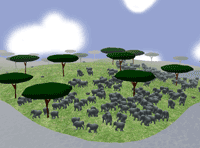
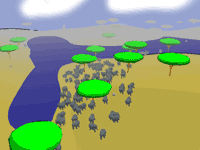

|
The different rendering modes.
|


|
The proactive behavior supports concurrent planning of multiple characters.
|

|
Building herds.
|
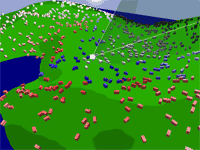
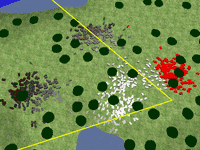
|
The level of detail depends on the camera view-frustum and the visibility.
|
Our second system is designed as a standalone agent engine that can be added to a game engine. It supports up to several hundred agents
in a real-time environment, behavior composition, grouping, and hierarchical organizations.
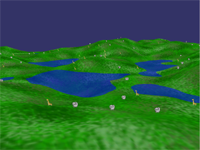
|
The testenvironment is a hilly ground with lakes as obstacles.
|
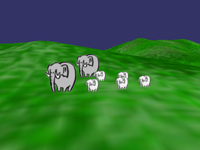
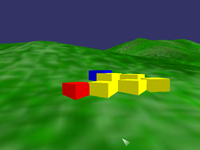
|
An example of a elephant family. The second image shows the color-coded behavior types used for the family.
|
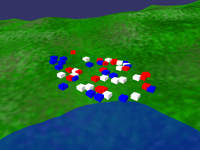
|
An example of a herd of agents. Again, the colors denote the type of agent. This group was built using modulo-based rules.
|
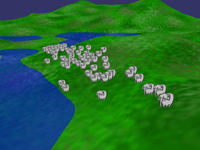
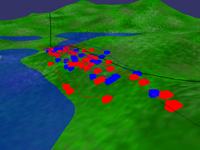
|
A recursively defined herd. Each agent has its own leader in the hierarchy of the group. The image on the right shows the types of agents in the group and their traces while following
their individual leader. The thick black line is the planned path for the whole group. Only the invisible group instance follows this path. The other group members follows their superior agent.
|

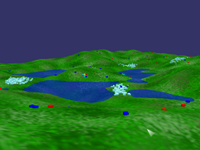
|
A scene with 680 agents in groups or as individuals. The right image shows their types.
|
Our first system was set up on a game engine. We integrated a dynamics environment in order to support physically correct motions.
Due to the computationally expensive collision detection, not more than one agent can be simulated simultaneously.

|
A screenshot of this application which was built by three students during their Master's thesis.
|

|
Another screenshot of the application. This time, only the creature's skeleton is shown without its skin. Additionally, the control displays for the brain (left side) and the motor system (right side) are turned on.
|
|
|

